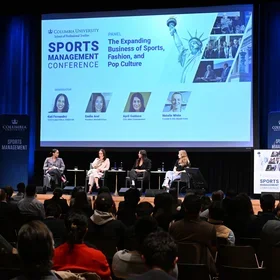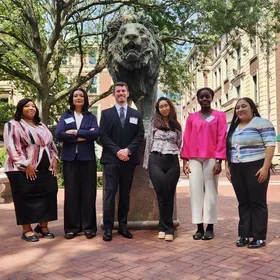"Some of us are windows, and some of us are mirrors," said Amy Arbus at the September 3rd session of Narrative Medicine Rounds held at Columbia University Medical Center's Allan Rosenfield Building auditorium. Arbus, an editorial and commercial photographer (The New Yorker, The New York Times Magazine, and others) and the daughter of the late photographer Diane Arbus, spoke before a crowd of about 60 members of the Columbia community. Herself a window into healing, art, and the art of healing, Arbus spoke about her experiences with depression, the sometimes fraught relationship between doctor and patient, and the creative work that saved her life.
"When my mother took her own life in 1971, I had a terrible phobia about depression,” she said, “because I knew it could be inherited. I spent my life trying to prove that I wasn't afflicted, which of course often caused people to suspect I was.”
“At the age of 53, I had to have a preventative oophorectomy. I had been warned that being put into surgical menopause can cause depression -- and, as you know, I have a family history. Despite this recipe for disaster, none of the medical professionals I saw knew how to treat me. I was misdiagnosed, mistreated, and left untreated.”
Arbus said, “I didn't know how to describe my symptoms...I became an expert at hiding them….It wasn't until I was in the ER lying on a gurney talking to the head of the psych department that I could articulate my symptoms. I spoke of an overwhelming sense of dread that would descend on me the moment I woke up. I saw in his eyes that he recognized the feeling.”
She explained the disconnect between patients like her and the clinicians tasked with treating them: “Patients and doctors don't speak the same language. When I'm a patient, I'm terrified of my possible diagnosis and therefore unable to hear what I'm being told.”
She said of the intersection of her professional life and her personal life, “I have devoted my life to capturing people's feelings on film, yet I'm afraid to expose my own.”
With regard to creative professionals like her and medical professionals like many of the audience members, she said, “We have so much to learn by reading people's expressions and body language. But if we aren't paying attention, it's what we don't see in others or even in ourselves that might kill us.”


